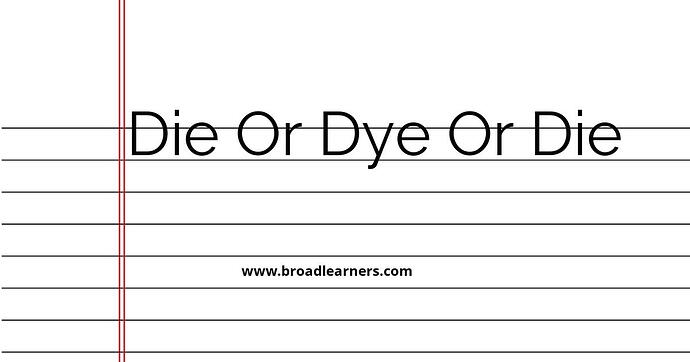'Die', 'dye', and 'die' are commonly confused words in English grammar. Understanding the difference between 'die', 'dye', and 'die' is important to use them correctly in written and spoken English.
'Die' is a verb that means to cease living or to stop existing. It is often used to refer to the end of a person's life or the end of something's existence.
'Dye' is a noun or a verb that refers to a substance used to change the color of something. It is used to describe the process of coloring or staining something.
'Die' is a noun or a verb that refers to a device used for shaping or cutting materials, often used in manufacturing or crafting.
Let's take a closer look at the meanings and usage of 'die', 'dye', and 'die'.
| 'Die' | 'Dye' | 'Die' |
|---|---|---|
| The word 'die' is a verb that means to cease living or to stop existing. | The word 'dye' is a noun or a verb that refers to a substance used to change the color of something. | The word 'die' is a noun or a verb that refers to a device used for shaping or cutting materials. |
|
|
|
To remember the difference between 'die', 'dye', and 'die', it can be helpful to remember their specific meanings:
- 'Die' refers to the end of life or existence.
- 'Dye' refers to the process of coloring or staining something.
- 'Die' refers to a device used for shaping or cutting materials.
Here are some examples of correct usage:
- He died of old age. (referring to the end of life)
- She dyed her shirt blue. (referring to the process of coloring)
- I need a die to cut out the shapes. (referring to the device used for shaping)
Remembering the correct usage of 'die', 'dye', and 'die' will improve your grammar and communication skills.
